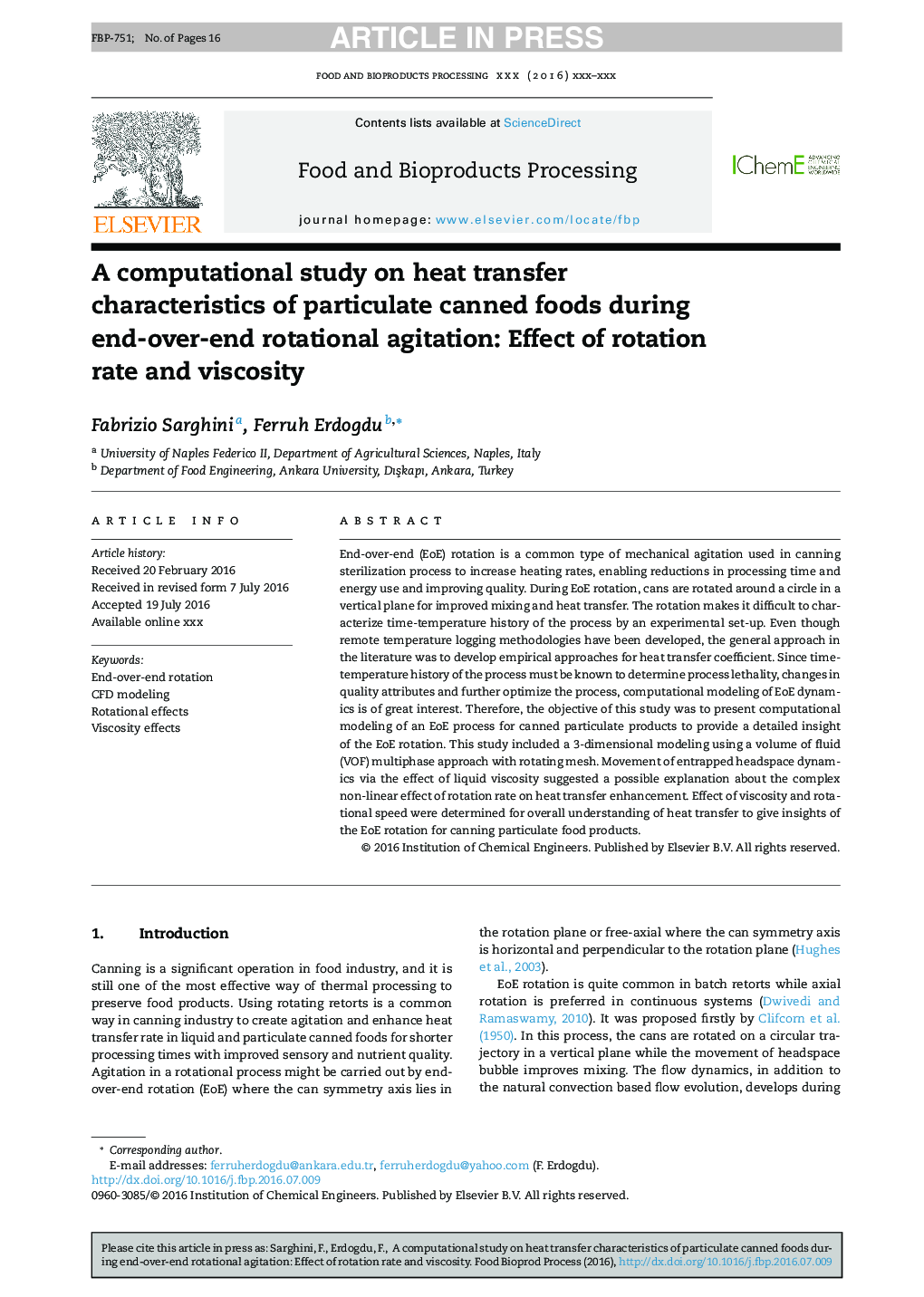| Article ID | Journal | Published Year | Pages | File Type |
|---|---|---|---|---|
| 6488425 | Food and Bioproducts Processing | 2016 | 16 Pages |
Abstract
End-over-end (EoE) rotation is a common type of mechanical agitation used in canning sterilization process to increase heating rates, enabling reductions in processing time and energy use and improving quality. During EoE rotation, cans are rotated around a circle in a vertical plane for improved mixing and heat transfer. The rotation makes it difficult to characterize time-temperature history of the process by an experimental set-up. Even though remote temperature logging methodologies have been developed, the general approach in the literature was to develop empirical approaches for heat transfer coefficient. Since time-temperature history of the process must be known to determine process lethality, changes in quality attributes and further optimize the process, computational modeling of EoE dynamics is of great interest. Therefore, the objective of this study was to present computational modeling of an EoE process for canned particulate products to provide a detailed insight of the EoE rotation. This study included a 3-dimensional modeling using a volume of fluid (VOF) multiphase approach with rotating mesh. Movement of entrapped headspace dynamics via the effect of liquid viscosity suggested a possible explanation about the complex non-linear effect of rotation rate on heat transfer enhancement. Effect of viscosity and rotational speed were determined for overall understanding of heat transfer to give insights of the EoE rotation for canning particulate food products.
Related Topics
Physical Sciences and Engineering
Chemical Engineering
Bioengineering
Authors
Fabrizio Sarghini, Ferruh Erdogdu,
